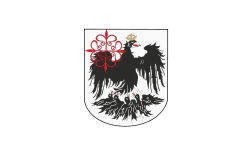Parque Patricios
| Parque Patricios | |
|---|---|
| Barrio | |
|
| |
 Location of Parque Patricios within Buenos Aires | |
| Country |
|
| Autonomous City | Buenos Aires |
| Comuna | C4 |
| Important sites | Caseros Prison, Caseros Prison Demolition Project, Estadio Tomás Adolfo Ducó |
| Area | |
| • Total | 3.8 km2 (1.5 sq mi) |
| Population (2001) | |
| • Total | 40,885 |
| • Density | 11,000/km2 (28,000/sq mi) |
| Time zone | ART (UTC-3) |
Parque Patricios is a barrio located on the southern side of Buenos Aires, Argentina belonging to the fourth comuna.
Parque Patricios underwent a transformation during the beginning of the 1900s. The government moved the main slaughterhouse to Mataderos, removed refuse piles and the notorious trash incinerators ("la quema") and the cemetery used during the 1871 yellow fever epidemic, now Parque Ameghino. Parks, a zoo and hospitals were put in their place. Parque Patricios received its name from the park of the same name, designed by Carlos Thays, the French architect who designed many of the most distinctive parks in the north of the city including the Botanical Garden and Bosques de Palermo.
.jpg)
This barrio features many hospitals which treat patients from all parts of Argentina, as well as the notorious former Caseros Prison. It is also the home of Club Atlético Huracán, a First Division football team, and their stadium Estadio Tomás Adolfo Ducó. Parque Patricios is bordered by the barrios of Barracas and Nueva Pompeya to the south; Constitución to the east; San Cristóbal to the north; and Boedo to the west.
The barrio is referred to in several tango lyrics, most notably "the blacksmith's corner" in the tango Sur is the corner of Calle Inclán and Calle Sánchez de Lória.

